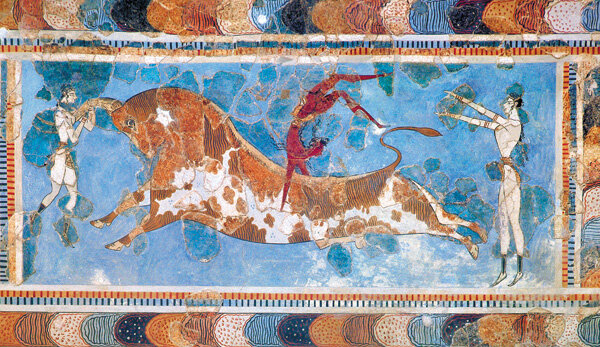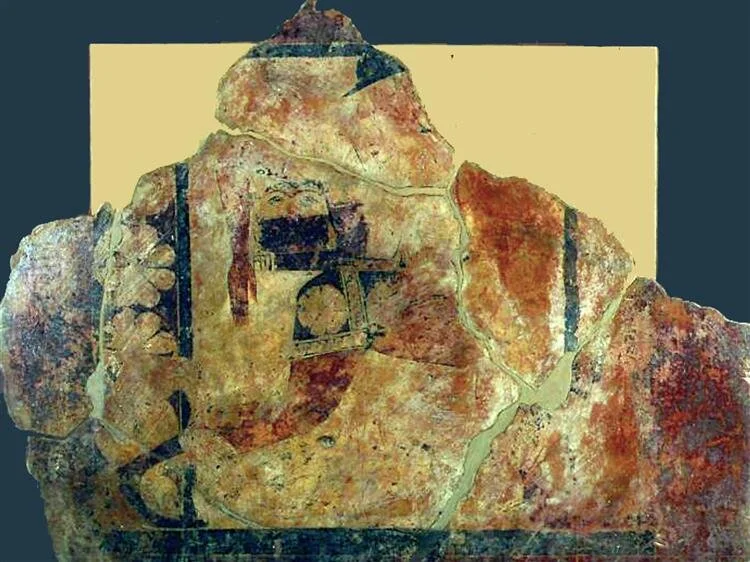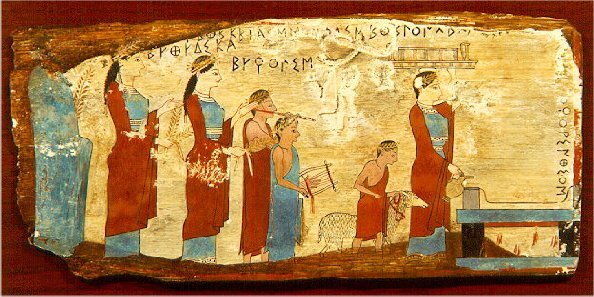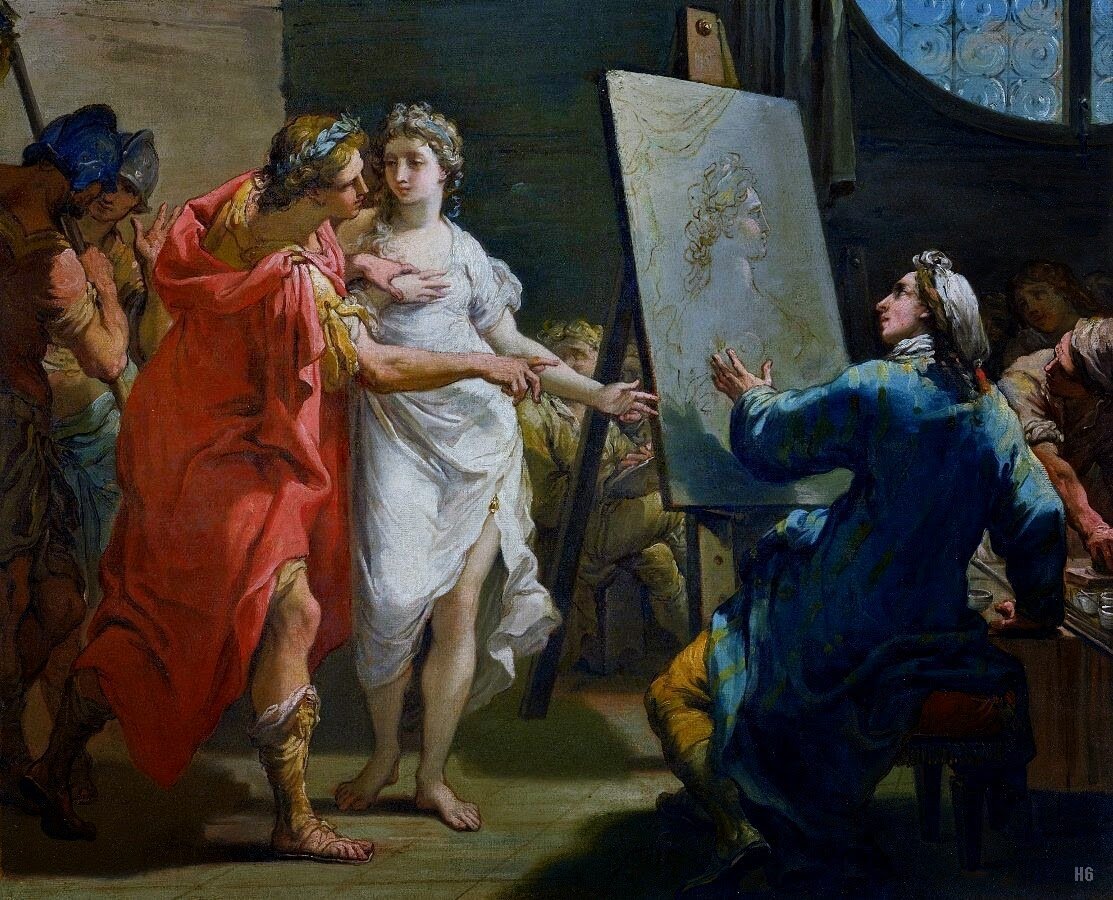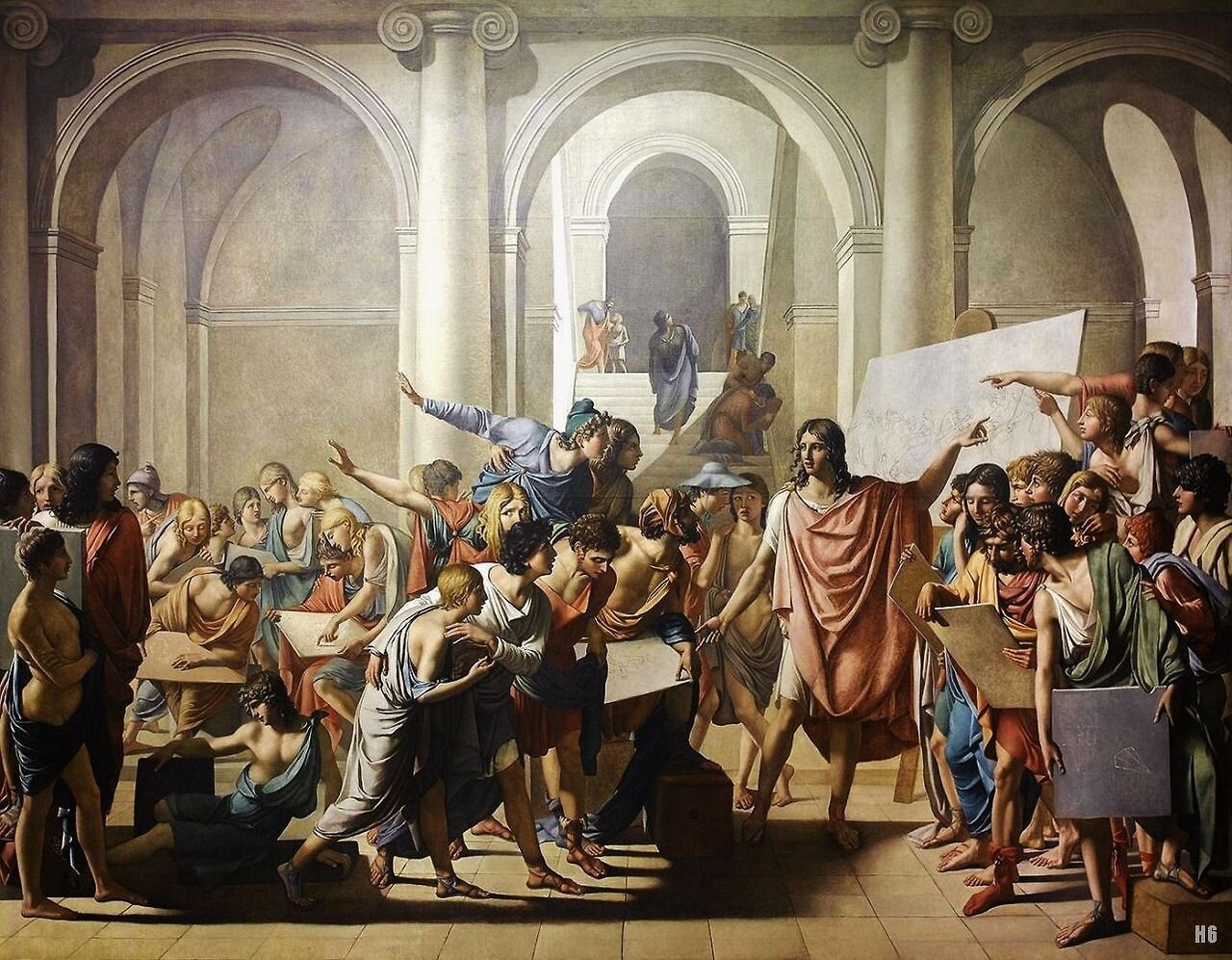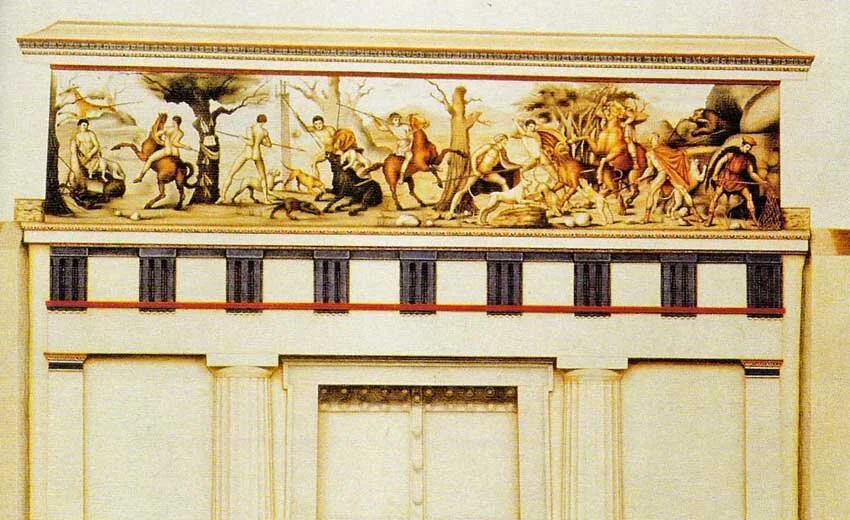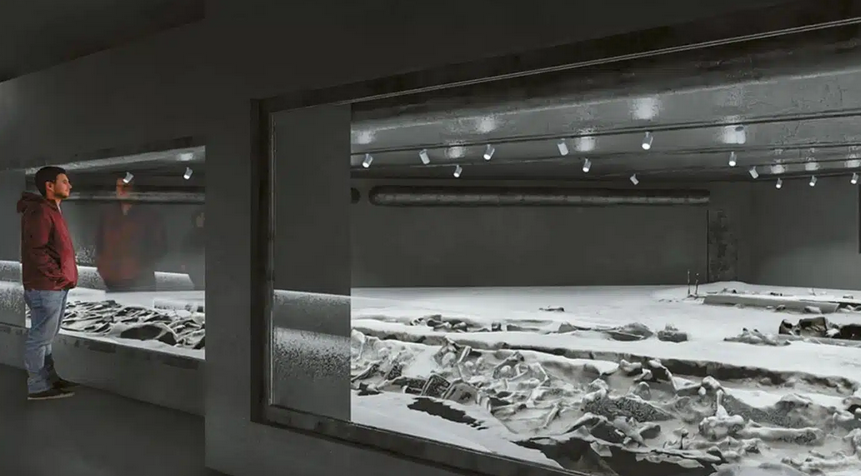Ancient Greek painting is an art that ranks equally with architecture and sculpture in the Greek world. It has, however, been lost for the most part, and especially the paintings of the classical period are almost entirely lost. It was always linked to architecture and sculpture, as both sculptures and architectural limbs were painted in a way that is well known to us, as there are thousands of traces of paint from architectural limbs and sculptures that survive today, allowing us to get a complete idea of how the Greek painting was.
Minoan Spring Fresco West Wall Swallows Scene
Indeed, the use of paint on these three-dimensional surfaces led painting to representation, the rendering of space and shading. Painting was also linked to the arts of mosaic and angiography, of which we also have innumerable examples, since mosaics in particular imitate original paintings in many cases, each stylistically imitating the paintings of the time.
Our sources are more than the existence of the original works, such as the painting of the Roman period, the influence of Greek painting on Etruscan painting, as well as the descriptions of ancient writers such as Pliny the Elder, Lucian, Athenian, Aristotle, Plato, Xenophon, etc.
Minoan painting
Minoan painting was the first important period of painting in Greece. It is associated with the architecture of the palaces and is characterized by cheerful colors, naturalism and delicacy in the rendering of forms.
Mycenaean painting is related to Minoan and imitates it to some extent. Its chief examples are also frescoes of palaces. In angiography it also imitates the Cycladic models.
Cycladic painting
Cycladic painting, which flourished in parallel with the Minoan period, is more anthropocentric than Minoan, despite the fact that we have in it a strong presence of naturalistic patterns, which links it to later classical art. The use of color in pottery began early in the Cyclades, while polychromy was introduced in the Middle Cycladic period. At the same time we have the discovery of plaster and the development of monumental painting.
Archaic painting
Archaic painting, like the previously described periods, remains a two-dimensional painting. Sometimes (especially in the coloring of the architectural parts of the temples) the Polygnotia colors are used, and sometimes colors such as red, black, dark, green, white, yellow, without mixing colors and shades. The purity and clarity of the forms and the inner rhythm of the composition are the most important.
Important painters in the archaic period were: Telephanes from Sikyona, the Corinthians Cleanthes, Aridikos and Ekfantos, Philokles probably from Naukrati, Kimon from Kleones.
Of the works of the Archaic period we may mention:
-Numerous traces of paint on architectural components and sculptures.
-Four plates were found in a cave at Sikyona. The colors used are red, brown, blue, black and white.
- Remains of a fresco from the temple of Apollo at Thermo, Aetolia (clay metopes, etc.).
-Five wall paintings from Poseidonia (in Italy, now Paistum).
Painting, in the classical as well as in the archaic period, is a public good directly connected with cult, and expresses the general ideals of the city. It has a monumental character and is the visual achievement, expression of the Greek worldview. Classical painting introduces the shading of light and moves on to a more detailed description of the forms and structure of the space.
Here are some of the most important representatives of Greek painting of the classical period:
-Polygnotos, whose contribution to the development of classical painting was incredible. He was from Thassos and his father Aglaofon was also a painter. Aristotle calls him a "good ethnographer." Polygnotos, together with Mikonas, took the most important steps in the representation of space and surface. But the most important achievement of Polygnotos was the analytical use of the colors with which nature works, especially in its material part (and not in the illusory one, like the color of the sea and the sky, which, although in reality are transparent, they look blue).
The pure and intense colors, e.g. red, yellow, blue, etc., exist in the material part of nature in a ratio of less than 1/1000. Painting had to imitate the coloring of nature. This is the famous "Polygnotia tetrachromia". These colors are: White, black, brick (deep red) and all their derivatives (gray, brown, green, yellow, orange, pink, etc.).
Alexander the Great and Kampaspi in the workshop of Apellis
The use of "Polygnotia colors" characterizes all ancient Greek painting (Archaic, etc.) centuries before Polygnotos. The offer of Polygnotos lies in the greater analysis of these colors, that is, in the production of more color gradations on this color scale.
These colors, give the sense of continuity and unity of agreement and coherence and are therefore the reduction to En, in universal unity (En is identified with Zeus, God, Spirit, but is also called by many other names this supreme deity of everything, as Zeno the Kitievs tells us).
So it was rightly called the "four colors of Love" (since love is the reduction to one principle of everything, the union with everything, with the En). Many Greeks spoke about it, such as Olympius, who states that the Pythagoreans, Empedocles and Plato spoke about the same subject.
Plato also says that if you do not use the Polygnotia colors when painting a face, you lose the natural hue of the human face.
-Agatharchus, who was the most important stage designer of the 5th century. He had written a treatise from which Democritus and Anaxagoras drew, and composed studies on "the manner in which surface-level painted objects appear in the picture either as prominent or as deviating from the depth."
-Apollodorus the Athenian, Parasios of Ephesus, and Zeuxis of Heraklion in Greater Greece, who introduced the technique of shading.
-Euphobos, Pamfilos, and Pausias, who established the school of Sikyon as the most important school of painting in the Greek world, in which many of the later painters of importance who came from different parts of Greece were trained.
-Eufranor, who wrote a book on symmetry and colors.
The School of Apelles. 1800. Jean Broc. French. 1771-1850. oil on canvas
-Nikias, a pupil of Antidotos and an associate of Praxitelis, Apellis from Colophon of Ionia, and Protogenis, who are believed to have reached the height of prosperity and perfection in ancient Greek painting.
-Iaia, who had gained a reputation for being able to work quickly in addition to the quality of her work. It was said that no one had a faster hand. The rewards of her works surpassed those of her contemporaries.
Important painters were also Efranor, Panainos, Aglaofon, Timareti, Kifisodoros, Erillos, Evinor, Kalypso, Dionysios, Ephor, Pamfilos, Athinion, Aetion, Nikomachos, Aristaretis, Antolidis, Andoridis, Andoridis, Ktisiklis, Irini, Evdoros, Ktisidimos, etc.
Here are some of the most important paintings of the classical era:
- "Zeus seated on a throne", "Helen of Kroton", "Alcmene", Zeus.
- "Meleager and Atalanta", "Hercules at Lindos", Parasios.
- "Iliou Persis", "Nekia", "Odysseus with Nafsika", Polygnotos.
- "Amazon War", "Theseus", "Argonauts", Mikon.
- "The victor in a nude contest, holding a palm branch," Evpompos.
- "Medea contemplating the murder of her children", Aristolaos.
- "Nekia," "Perseus and Andromeda," "Nemea," "Yakinthos," Nicias.
- "Artemis in the midst of Nymphs," "Emerging Aphrodite", Apellis.
- "Ialyssos," "Kydippis," "The sacred ships of the Athenians," Protogenis.
- "The child blowing the fire before the hearth," Antifilos.
The preserved painted tombstones of Demitriada are also important, as are the mosaics of Paphos and all the Macedonian tombs in which large painted surfaces are preserved, such as the royal tombs at Vergina.
(The "Royal hunting scene" of Philoxenos, now preserved in the tomb of Philip), the tomb at St. Athanasios of Thessalonica (with the painted Ionian frieze), and the tombs at Lefkadia of Naoussa (the "Tomb of the Hymns" and others).
In conclusion, our growing knowledge of ancient Greek painting as an autonomous art, as well as of the painting of temples and public buildings in general, and all its other events (angiography, etc.), completes our understanding of the course of the Greek mind through the centuries.


